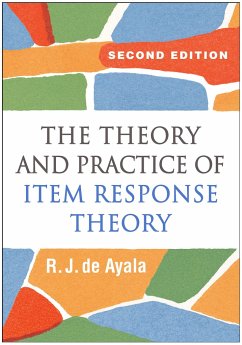
Game Theory, Machine Learning, and Production in Sports: The Fair-Credit Baseball Statistics
Versandkostenfrei!
Erscheint vorauss. 2. März 2026
79,99 €
inkl. MwSt.

PAYBACK Punkte
40 °P sammeln!
How is individual performance fairly measured when success depends on teamwork? This fundamental challenge spans many professional settings, from corporate partnerships to legal proceedings -- and nowhere is it more evident than in team sports.In this groundbreaking book, economist and game theorist Michael McBride presents an innovative answer to this question for the sport of baseball: the Fair-Credit Baseball statistics. Drawing on the Nobel Prize-winning Shapley Value from coalitional game theory, McBride creates two revolutionary measures of offensive performance: Shapley Run Credits (SRC...
How is individual performance fairly measured when success depends on teamwork? This fundamental challenge spans many professional settings, from corporate partnerships to legal proceedings -- and nowhere is it more evident than in team sports.In this groundbreaking book, economist and game theorist Michael McBride presents an innovative answer to this question for the sport of baseball: the Fair-Credit Baseball statistics. Drawing on the Nobel Prize-winning Shapley Value from coalitional game theory, McBride creates two revolutionary measures of offensive performance: Shapley Run Credits (SRC) and Offensive Shapley Win Credits (OSWC). Unlike traditional baseball statistics, these new measures satisfy rigorous mathematical fairness axioms, making them the fairest measures of individual credit in the sport.McBride combines this theoretical foundation with cutting-edge machine learning to analyse over a century of Major League Baseball data, producing the most accurate measures of offensive performance in baseball history. The result is a sophisticated yet intuitive statistical framework that finally gives players the credit they truly deserve for actual results -- not projected or average performance.Written for academic researchers, sports analysts, and baseball enthusiasts alike, this book successfully bridges complex mathematical theory with practical application. It offers technical rigor for professionals while remaining engaging and accessible for anyone passionate about understanding what really happens on the baseball diamond.












